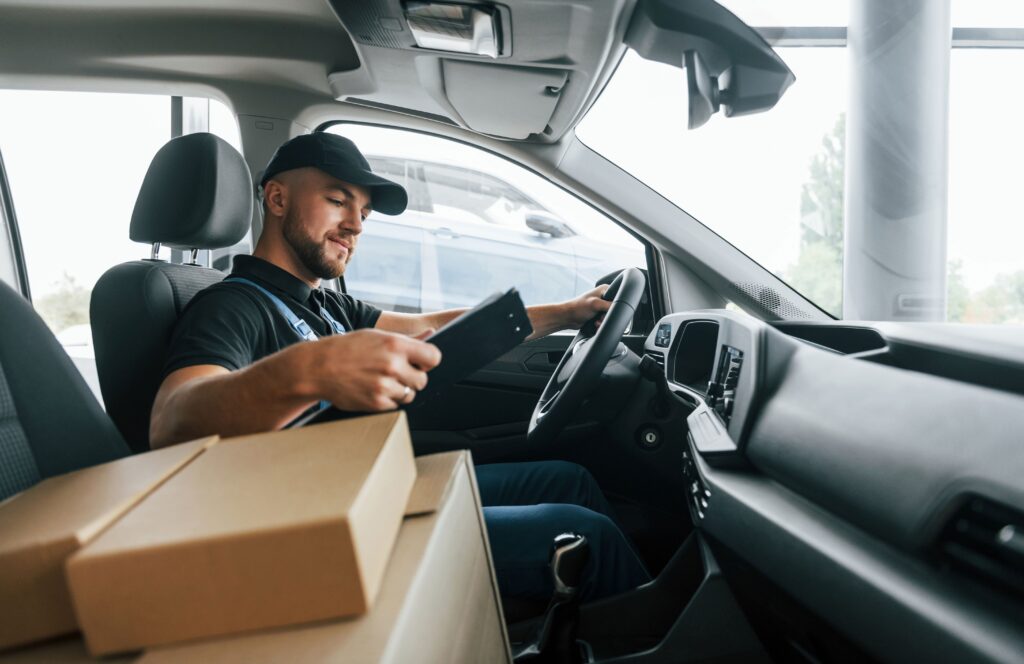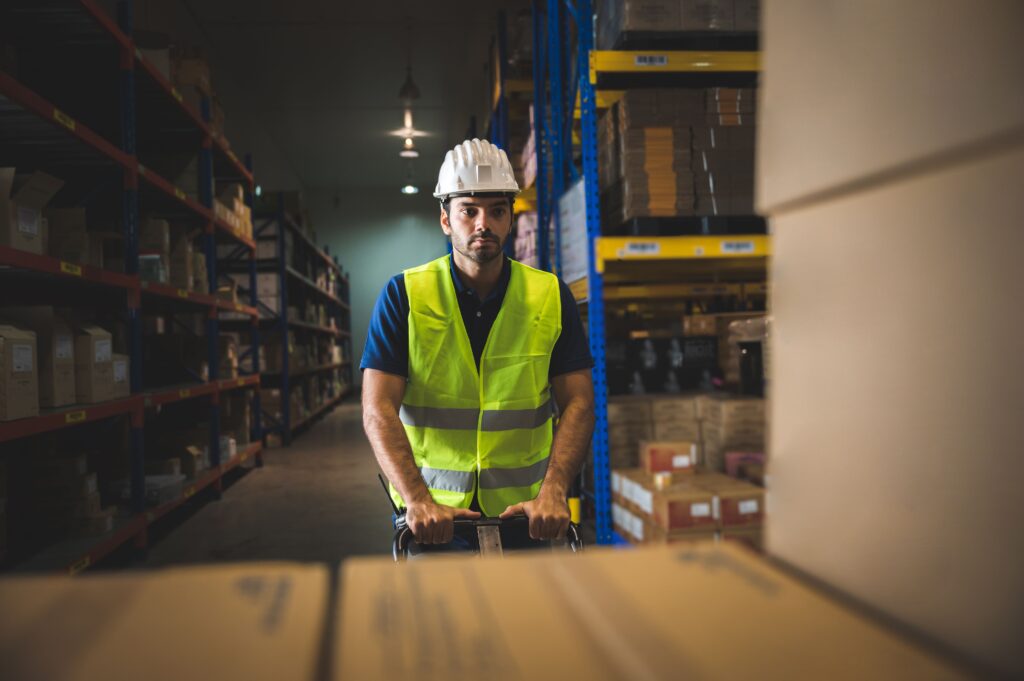Top 5 Technology Trends Shaping the Future Logistics
In today’s rapidly evolving world, the synergy between technology trends and logistics is driving innovation to new heights. The logistics industry, once defined by its physical movements, is now being redefined by digital revolutions that are enhancing efficiency, accuracy, and connectivity.
In this article, we will delve into the top five technology trends that are redefining the logistics landscape and making operations smoother, more efficient, and better connected than ever before.
Top 5 Technology Trends Impact Logistics Industry.

Trend in Cloud Logistics: Streamlining Operations
To start, packages are becoming complex to track due to the rise in purchases from e-commerce. Picture a logistics system that can effortlessly adapt to your needs, scale according to demand, and provide real-time access to critical data from anywhere in the world. This is precisely what cloud logistics offers.
The adoption of cloud-based logistics solutions has revolutionized the industry by providing companies with the ability to streamline their processes, increase efficiency, and gain a significant competitive advantage. Whether it’s optimizing routes, managing inventory, or tracking shipments, the cloud is reshaping the way logistics operations are conducted.
Leading logistics companies, like Amazon, have successfully harnessed the power of cloud logistics to enhance their supply chain operations. By leveraging cloud technology, they can ensure timely deliveries, enhance customer experiences, and scale their operations as needed. In essence, cloud logistics is the cornerstone of modern logistics, enabling companies to operate with unprecedented agility and responsiveness.
Trend in IoT: Enhancing Visibility
The Internet of Things (IoT) has ushered in a new era of visibility and control in logistics. IoT devices and sensors enable real-time tracking and monitoring of goods, vehicles, and assets throughout the supply chain. This technology provides logistics companies with an unprecedented level of visibility into their operations, allowing for enhanced efficiency and reduced costs.
Imagine sensors on cargo containers monitoring temperature and humidity, ensuring that sensitive goods arrive in perfect condition. These sensors can detect and report any deviations from ideal conditions, enabling proactive interventions to safeguard the cargo. Furthermore, IoT is also used to monitor the condition and maintenance needs of vehicles and equipment, reducing downtime and repair costs.

Trend in Big Data Analytics: Data-Driven Decision Making
In an age of big data, logistics companies are increasingly harnessing the power of analytics to make data-driven decisions. Big data analytics in logistics involves collecting and analyzing vast datasets to gain valuable insights and drive operational improvements.
For instance, predictive analytics can forecast future demand trends, enabling companies to optimize their inventory levels, reduce stockouts, and improve overall supply chain efficiency. Additionally, algorithms can optimize delivery routes, ensuring that packages are delivered faster and more cost-effectively than ever before.
Major logistics players, such as UPS, have fully embraced big data analytics to optimize their operations. By analyzing large datasets, logistics professionals can identify trends, pinpoint inefficiencies, and make strategic decisions that save time and money. With the wealth of data available today, logistics companies are empowered to make informed decisions that were previously unimaginable.
Trend in AI: Smarter Logistics
Artificial Intelligence (AI) is transforming logistics operations by providing advanced tools for automation, prediction, and optimization. AI-driven applications are streamlining processes and enhancing the customer experience.
For example, predictive maintenance algorithms can forecast when equipment and vehicles need servicing, reducing downtime and maintenance costs. These algorithms monitor equipment health in real-time, identifying potential issues before they result in costly breakdowns. This proactive approach to maintenance ensures that vehicles and machinery are always in peak condition, thereby reducing disruptions to logistics operations.
Another AI-driven application making waves in logistics is chatbots. These intelligent virtual assistants provide instant customer support, improving communication and satisfaction. Customers can get quick answers to their inquiries, track their shipments, and receive updates in real time. This not only enhances the customer experience but also frees up human customer service agents to focus on more complex tasks.
AI’s ability to process vast amounts of data quickly and accurately is a game-changer in the logistics industry. Whether it’s optimizing routes, predicting demand, or automating tasks, AI is making logistics smarter and more efficient than ever before.
Trend in Self-Driving Vehicles: The Future of Transport
Imagine a logistics system where vehicles can operate around the clock without the need for rest breaks or sleep. This is the promise of self-driving vehicles, and it’s rapidly becoming a reality in the logistics industry. Autonomous vehicles are redefining last-mile delivery and warehouse operations.
Self-driving trucks, for example, can travel long distances without human intervention, reducing labour costs and speeding up delivery times. These trucks are equipped with advanced sensors and AI systems that allow them to navigate roads, handle traffic, and make deliveries with remarkable precision.
Drones, on the other hand, are revolutionizing last-mile delivery. They can fly over traffic and terrain that would be impassable for traditional vehicles, making them ideal for delivering packages to remote or congested areas. Companies like Waymo and Amazon Prime Air are at the forefront of autonomous logistics, paving the way for a future where self-driving vehicles are the norm rather than the exception.

Conclusion
The logistics industry is in the midst of a technological revolution. Cloud logistics, IoT, big data analytics, AI, and self-driving vehicles are reshaping the way goods are transported, tracked, and managed. To remain competitive in this dynamic environment, logistics companies must embrace these technologies and adapt to the changing landscape of logistics.
As we move forward, these trends will continue to evolve, presenting new opportunities and challenges. Staying at the forefront of technological advancements will be the key to delivering better services and experiences to customers, ultimately redefining the future of logistics.
References
Top 10 Technology Trends Transforming Logistics (https://www.unipart.com/logistics/top-10-technology-trends-transforming-logistics/)
The Swiss Institute of Management and Innovation (SIMI) is the first fully accredited and globally recognized Higher Education provider in Zug, Switzerland. SIMI provides a unique opportunity to transform learners’ lives by giving students access to authentic, high-quality Swiss education and training.
Candidates can connect with SIMI through our official website or the official Facebook page below. We are looking forward in helping you to achieve great success.
